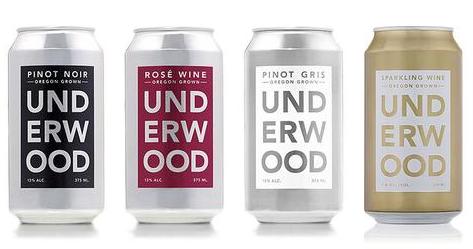Wine in a can is slowly but surely making its way onto retail shelves. Canned pinot grigio and chardonnay are showing up in coolers alongside beer. This trend, which is making wine more approachable, convenient and inexpensive, is often referred to as the “beerification” of wine.
Experiments with wine packaging have generally been met with resistance from purists; consider screw tops, boxed wines and wine on tap. And the can is no different. How will the can affect the taste of the wine? And what about wine serving etiquette? Will the “woosh” of a can opening have the same romantic appeal as the pop of a cork?
But there’s one time when the can may reign supreme.
Most consumers are aware of the adversity when it comes to wine and outdoor adventure. Glass is prohibited in many locations but, even where it is allowed, wine drinkers are still faced with the challenges of lugging the bottle in their gear and remembering to pack a corkscrew — not to mention the difficulty of packing fragile glassware and dealing with an opened or empty bottle.
Canned wine avoids almost all of these obstacles. The cans are lightweight, won’t break into dangerous shards and require no special openers.
One of the main concerns with consumers is whether wine tastes different in cans. Will canned wine have a metallic taste?
In the wine I tried straight from the can, I could not detect any metallic or unclean taste. Because it was served very well-chilled in the can it wasn’t unpleasant, but could be best described as one-dimensional. When I tried it poured into a plastic cup it was much more fruity and in a wine glass it was very similar to any wine at this price point. The only issue with the can to glass transfer is it seems to defeat the purpose of having a travel-friendly option.
The other problem is can size.
A typical bottle of wine is 750 mL, considered to be about 5 glasses.
Cans are available in 500 mL (3.34 glasses); 375 mL (2.5 glasses); and 250 mL (1.67 glasses). With these ranging sizes consumers should keep in mind that one can contains more than one glass of wine, so be careful not to overdrink.
A potential con for consumers is that once the can is opened, it can’t be resealed. So be prepared to drink it all or pour it out. But, overall, if you need a grab and go wine for outdoor places, the cans are a great alternative.
THE VALUES
- 2014 Underwood Pinot Grigio, Oregon (about $7 retail for a 375 mL can)
- 2014 Underwood Rose, Oregon (about $7 retail for a 375 mL can)
